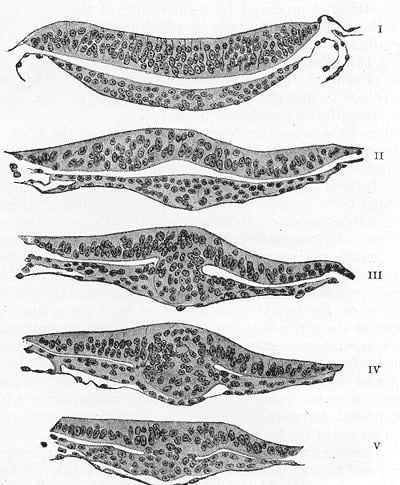Code TE E5.15.1.0.0.0.1 | ||
 | ||
Latin epithelium tubi neuralis, neuroectoderma, epithelium tubae neuralis | ||
Neuroectoderm (or neural ectoderm or neural tube epithelium) is ectoderm which receives bone morphogenetic protein-inhibiting signals from proteins such as noggin, which leads to the development of the nervous system from this tissue.
After recruitment from the ectoderm, the neuroectoderm undergoes three stages of development: transformation into the neural plate, transformation into the neural groove (with associated neural folds), and transformation into the neural tube. After formation of the tube, the brain forms into three sections; the hindbrain, the midbrain, and the forebrain.
The types of neuroectoderm include:
References
Neuroectoderm Wikipedia(Text) CC BY-SA
